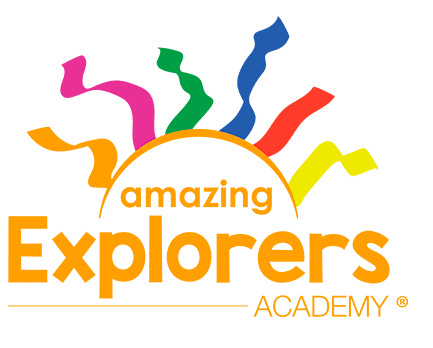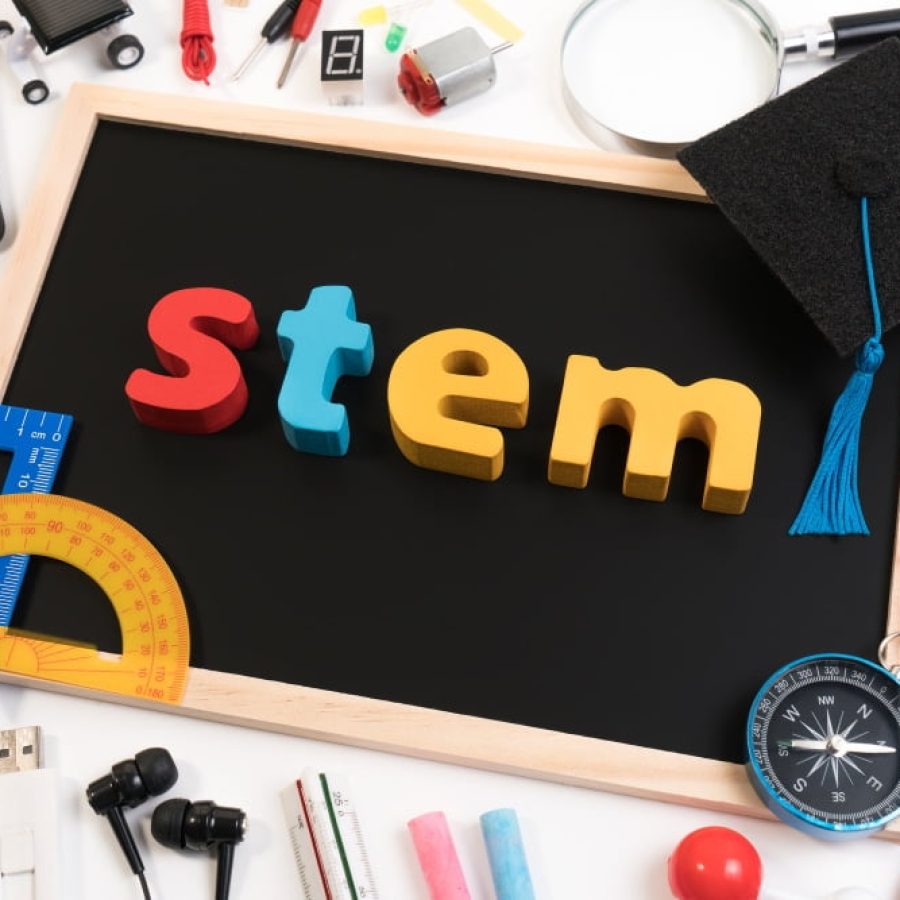Parents want the best for their kids in every way. That’s a no-brainer, but the real challenge is figuring out how to turn that into real opportunities.
While traditional methods of teaching have their positive aspects, Moms and Dads have a valuable ally to rely on to expand their child’s options for their professional future.
We’ll discuss what STEM education is, how it differs from traditional learning, its benefits and how parents can maximize its impacts for Little Ones.
What Does STEM Education Mean?
STEM is an acronym that stands for Science, Technology, Engineering and Mathematics. These fields have been combined as a single educational method to allow children to interact effortlessly with them as young as possible.
Learning should be fun, even if the subject of study is more objective and technically guided. If you want to teach children about balance, chemical reactions, or about measurements, you should make it enjoyable!
Applying STEM as an educational approach means teaching children how to love the act of studying and learning, no matter how tricky the subject can be.
The result of combining these topics and applying its principles during classes is that students become less intimidated.
As a result, they can aim high towards their future. They can dream about becoming engineers, astronauts, scientists, teachers holding the confidence that they’ve got what it takes to excel in their areas.
Differences Between STEM and Traditional Education Methodologies
Since we’re talking about the future of preschoolers, toddlers and children: of course they won’t be submitted to spreadsheets or calculations to learn about basic science or engineering practices.
Instead, STEM stands over a more attractive perspective: students are familiarized with these topics when they interact with these knowledge fields from a young age and (more importantly) learn about them dynamically.
Children are more likely to stand out in terms of school performance, independence and thinking freely about their future when they learn from the most broad perspectives. This includes abilities such as cooperating with others, understanding the fundamentals of how things are created and how to think creatively.
This is particularly valuable if we consider that the future of work demands skills that are introduced and developed in STEM education from a very young age.
How STEM Builds Confidence and Future-Ready Skills
Confidence grows naturally when children engage in hands-on activities that allow them to experiment and bring ideas to life.
Each success, no matter how small, gives them a sense of accomplishment that encourages continued curiosity and willingness to try new challenges.
Beyond building self-assurance, STEM activities help develop essential skills like adaptability and teamwork. Early experience with real-world problems makes children comfortable with uncertainty and teaches them to think creatively, preparing them for both academic achievement and also the challenges of everyday life.
Encouraging Creativity, Problem-Solving, and Curiosity
Allowing children to freely explore and experiment opens the door to imaginative thinking. When they’re not confined by rigid rules, their ability to generate original ideas and innovate is greatly enhanced from an early age.
Facing challenges with a sense of curiosity and persistence helps children understand that setbacks are a natural part of learning.
This attitude builds resilience and empowers them to confidently tackle difficult problems.
Developing Independence and School Readiness Through Hands-On Discovery
When children interact directly with materials and experiments, they gain independence by taking control of their learning process. This active involvement builds their confidence and motivates them to pursue knowledge on their own terms.
Additionally, hands-on experiences improve focus, curiosity, and the ability to follow sequence—skills that are crucial for academic success.
These early learning moments establish a strong foundation, enabling smoother transitions to more formal schooling environments and greater readiness for future challenges.
Is STEAM Better Than STEM?
You might have heard two different terms that sound very similar: STEAM and STEM. Next, let’s briefly cover what each means (but you can dive deep into that difference with this article: STEAM vs. STEM: What’s The Difference?).
When compared to traditional classroom education, a methodology based on STEM principles is naturally more advanced in terms of how it affects child’s development.
If we add the Art element to it and turn this acronym to STEAM, it only gets better!
Connecting with the Arts helps children to improve their critical thinking, their problem solving skills and collaboration.
Therefore, all those skills that are already part of STEM are enhanced when Arts are added to the curriculum.
So the short answer is: yes, STEAM is stronger than STEM because it enriches the student’s learning toolkit.
What Makes STEM Effective in Early Education
STEM education is most effective when it is hands-on and engaging, allowing children to learn through exploration and play. Early exposure to these subjects sparks natural curiosity and makes complex concepts more accessible and less intimidating.
Another key factor is the integration of multiple disciplines, which helps develop problem-solving skills and adaptability, all crucial skills for lifelong learning.
Finally, supportive teachers and environments that foster questioning and creativity make the ideal setting for young learners to thrive in STEM education.
The Role of Caring STEAM Teachers
STEAM teachers can create a supportive and encouraging environment where students feel safe to express ideas, ask questions, and explore new concepts without fear of failure.
These teachers are the ones who share knowledge while also inspiring curiosity and resilience. By recognizing each child’s unique strengths and challenges, they tailor their guidance to nurture confidence and a love for learning.
Ultimately, STEAM educators help children develop both academic skills and emotional intelligence, preparing them to thrive in school and beyond.
How Does STEAM Education Affect My Child’s Future?
Discussing a child’s future is all about possibilities and aiming high to give them the tools to succeed—not forcing the child to think too ahead in their lives and miss the enjoyment of their childhood years!
Investing in a STEAM-based education simply means you’re making sure that they are equipped to make the best choices for their future.
By doing so, you’re showing they don’t have to settle for something they might not want based on the fact that (think) they can’t have technical skills.
How to Support STEM Learning at Home
Don’t make the mistake of thinking education only happens in the classroom or daycare! If children are learning all the time, then your home environment is also a stage for exploration.
Supporting STEM learning at home begins with creating an environment that encourages curiosity and discovery.
Parents can provide simple materials for hands-on experiments, ask open-ended questions, and celebrate the process of discovery rather than just the final result. This approach helps children feel comfortable exploring ideas without fear of making mistakes.
Additionally, integrating everyday activities like cooking, gardening, or building projects into learning moments strengthens STEM skills naturally. Encouraging storytelling about how things work and fostering conversations about technology or nature also deepen understanding, making STEM a fun and continuous part of daily life.
That’s it! Now you know the basics of what is STEM education and its impact on influencing a child’s future—or rather, expanding its possibilities.
The journey to becoming the best parent you can and equipping your child with the right tools starts at daycare! See how Amazing Explorers Academy sparks our student’s imagination and expands their meaningful interactions! Electric Car Learning and Real-World Experiences for Preschoolers


